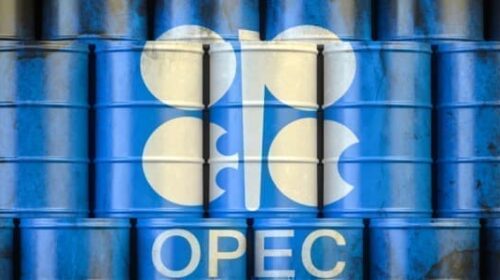This week saw some good news finally for oil consumers. Both OPEC and the International Energy Agency revised down their demand projections, suggesting that prices finally had some meaningful downward potential. But OPEC stands ready to change track. “Severe new lockdown measures amid surging Covid cases in China have led to a downward revision in our expectations for global oil demand in 2Q22 and for the year as a whole,” the IEA wrote in its latest Oil Market Report this week.
The agency also noted that OECD members consumed less oil than previously expected, which led the IEA to revise down its demand outlook for the year by 260,000 bpd from last month’s OMR to a total 99.4 million bpd.
At the same time, the agency cited stable and significant production additions during the first quarter of the year, noting that it was led by non-OPEC producers. Whenever a production increase is led by non-OPEC producers, it’s worth watching OPEC even more closely than usual for its response.
This response has yet to come, but the cartel itself is also revising down its outlook for demand for this year. And it is revising it down by a lot more than the IEA.
Global oil demand was going to be 480,000 bpd lower than previously expected, OPEC said in the latest edition of its Monthly Oil Market Report. The cartel cited slower economic growth because of the war in Ukraine as one reason for the revision, and Covid-related lockdowns in China as another.
As for supply, the IEA seems to be perfectly calm. After sounding the alarm about the potential loss of 3 million bpd of Russian oil exports because of Western sanctions, the agency now said that the coordinated release of a total 240 million barrels of crude, of which 180 million bpd to be released by the United States, would offset the effect of lost Russian supply.
It seems that the IEA is assuming that the loss of Russian supply will be temporary—just as the effect of the reserve release will only last for as long as the release lasts, if not less. And OPEC may yet serve a nasty surprise to IEA members ready to tap their own strategic reserves to normalize benchmark prices.
Related: Permian Could See Production Surge As New Permits Reach All-Time High
Earlier this month, OPEC met with European Union representatives only to tell them that it would not be stepping in to help if Russian oil exports were completely shut off.
“We could potentially see the loss of more than 7 million barrels per day (bpd) of Russian oil and other liquids exports, resulting from current and future sanctions or other voluntary actions. Considering the current demand outlook, it would be nearly impossible to replace a loss in volumes of this magnitude,” said the secretary-general of the cartel, Mohammed Barkindo.
Yet with demand forecasts being revised, OPEC might just decide to revise its production plans as well. With millions of Russian oil out of the (official) picture and a very slim chance of Iranian barrels coming back for the time being, it’s up to OPEC and the U.S. to fill the gap. If, that is, they want to.
U.S. producers seem to be warming up to the idea of boosting production, with prices so high their profit margins are fat enough to motivate more drilling. OPEC, meanwhile, boosted its production by just 67,000 bpd last month. That was because some OPEC members saw a decline instead of growth in their oil production, but Saudi Arabia notably undershot its production quota.
At the same time, OPEC revised upward its forecast for U.S. oil production for this year, and history shows that when U.S. oil production grows, OPEC is not one happy cartel and takes steps to counter that growth. Now, with this production growth expectation coupled with expectations of slower demand growth, OPEC’s reaction may only be a matter of time.
As for the nature of the potential reaction, it is not difficult to guess it. Right now, OPEC is selling its oil at prices last seen years ago. Buyers have few alternatives amid Western sanctions on Russia and U.S. sanctions on Venezuela and Iran. It’s a sellers’ market.
Yet news of the resurgence of Covid in China has prompted suspicion that the market is about to flip. After all, China is the world’s top importer in terms of absolute volumes, and imports are already down palpably because of the lockdowns. If China needs less oil, less oil should be made available.
Europe seems to be shaping up as a bigger client for OPEC oil right now, but it would be a temporary thing as the EU tries to wean itself off Russian hydrocarbons by replacing them with hydrocarbons from elsewhere.
Europe is not a long-term growth market for OPEC oil and as such, is, to put it bluntly, not an important market for the cartel. That’s especially true of the two OPEC producers that have the spare capacity to boost their output considerably.
So, if bearish expectations for oil continue to intensify, depending on how the coronavirus spread develops in China and what EU does about Russian oil, we may well see OPEC revise its production growth agreement with Russia and the rest of its OPEC+ partners before this year’s end.






